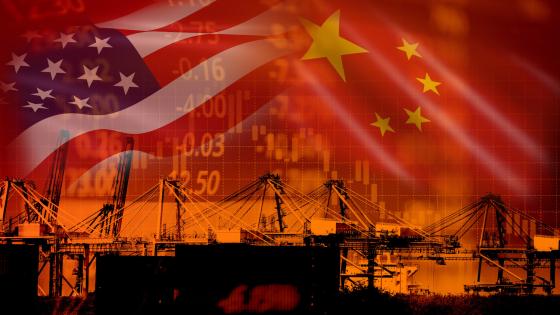The current financial crisis has fostered a demand for protectionism, and could lead to new trade barriers as occurred after the October 1929 crisis. A parallel can easily be drawn between the current situation and the one that existed then. In the early 1930s, unemployment was rising, a fear of deflation was prevailing, and a lack of public resources (especially in countries that paid war reparations) prevented governments from remedying the economic crisis. Moreover, today as in 1930, the context of decreasing prices can mechanically reinforce protection, as specific duties (which are numerous in agriculture) become more and more restrictive when world prices are down. In this type of economic context, protectionism is a tempting policy instrument for policymakers: it increases domestic prices and domestic activity in the short term, and it provides new government revenue. In addition, governments do not correctly anticipate world retaliation and counter retaliation, as was the case with the US in 1930 and also in 2007, when in the middle of the food crisis, governments implemented export bans and export restrictions in successive rounds of retaliation and counter retaliation. Therefore, a vicious circle of rising protectionism is always a possibility.
But there is one big difference between today’s situation and that of 1930; WTO membership means that countries cannot raise tariffs above bound duties, and therefore, an increase in tariff protectionism such as between the two world wars is more implausible today. As Pascal Lamy, director-general of the WTO, stated in a speech in Sydney on March 2, 2009: “The Doha Round is the most effective way to further constrain protectionist pressures by reducing the gap between bound commitments and applied policies.” The WTO is an international public good that acts as an insurance scheme against potential trade wars. And the insurance scheme would be even more effective if WTO members would conclude the Doha Round, making new commitments and reducing bound duties.
Because membership in the WTO acts as a deterrent to increased protectionism, the “cyclicity” of protectionism was much more pronounced before the WTO existed. For example, in the US the average tariff on dutiable imports was 50% in 1894, 40% in 1896, and 52.1% in 1899. The next cycle was even more severe; 49.8% in 1902, 16.4% in 1920, and 59.1% in 1932. Similar trends occurred in France (Messerlin 1985) and other European countries (Bairoch 1995; Irwin 1992). What explains this “cyclicity” of protectionism?
The main explanation is that it is linked to business cycles. During periods of sustained economic growth, unemployment is not a national concern and governments are prone to open borders to foreign competition—especially when trading partners are doing the same. During times of economic recession, the job market provides less opportunities, threats to existing jobs are badly perceived, and lobbying for protection increases.
What if Doha failed?
It is possible to evaluate how much trade destruction would occur if the Doha Development Agenda (DDA) were to fail. A recent study using the MIRAGE model of the world economy (Bouet and Labourde 2009) reveals a potential loss of $2,262 billion in volume of annual trade by 2025 (11.8%)—due not only to a failed DDA, but also to the fact that WTO members would increase protection levels to existing bound duties. The study indicates that the costs of rising protection would be almost five times greater than the gains realised from trade creation resulting from the DDA. This result is not surprising because of the asymmetric situation that currently exists; past liberalisation has kept tariffs low and has limited the margin of reduction. But at the same time, the binding overhang is still significant, especially for developing countries.1 Even a limited increase in protection (such as eliminating the unilateral liberalisation that has taken place since the end of the Uruguay Round) would lead to a potential loss of $1,453 billion (7.6%).
A successfully concluded DDA would not only increase trade, but it would also reinforce binding commitments and reduce existing bound duties, which would make the trade environment more secure and decrease the costs associated with potential trade wars. The study concretised this idea by comparing the application of current bound duties with the application of new bound duties resulting from the DDA; a successful DDA would be worth $809 billion in terms of trade volume and $184 billion in terms of real income.
These conclusions are especially true for poor countries since most unilateral and unbound liberalisations have taken place in the developing world in recent years, and poor countries currently benefit from unilateral preferences granted by developed countries that may be cancelled should the DDA fail. If the real value of the DDA is measured by the insurance role that it plays, then two-thirds of the total global value of $184 billion in terms of real income (or $128 billion) would benefit developing countries. This explains why the DDA should be finally considered as a “Development” Round.
By focusing only on the limited gains of the DDA, many observers have neglected the potential cost of its failure; a failed DDA would send the wrong signal in terms of global governance, and in more pragmatic terms, it could lead to an unravelling of the past 15 years of trade liberalisation. In the current unstable environment, a concrete global agreement will be the proof needed by the private sector that governments can act upon the commitments they make in speeches.
References
Bairoch, P. 1995. Economics and World History: Myths and Paradoxes. Chicago: University of Chicago Press.
Bouet, A., and D. Labourde. 2009. Assessing the Potential Cost of a Failed Doha Round. IFPRI Discussion Paper, Forthcoming, IFPRI.
Irwin, D.A. 1992. Multilateral and Bilateral Trade Policies in the World Trading System: an Historical Perspective. In New Dimension of Regional Integration, eds. de J. de Melo and A. Panagarya. Cambridge .Center for Economic Policy Research.
Messerlin P. 1985. Les Politiques Commerciales et leurs Effets en Longue Periode. In Le Protectionnisme, eds. B. Lassuderie-Duchene and J.-L. Reiffers. Paris: Economica.
US International Trade Commission, 2006,Value of US Imports for Consumption, Duties Collected and Ratio of Duties to Values, 1891 – 2005, Statistical services Division, March 2006.
1 Basic economic theory states that due to the quadratic nature of the cost of a tariff, the same absolute tariff change will lead to fewer gains (tariff reductions) than losses (tariff increases).


